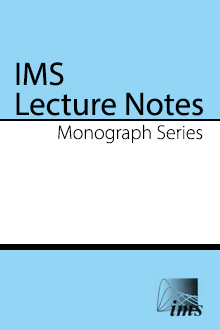Abstract
Consider an imaging situation with extremely high noise levels, hidden in the noise there may or may not be a signal; the signal--when present--is so faint that it cannot be reliably detected from a single frame of imagery. Suppose now multiple frames of imagery are available. Within each frame, there is only one pixel possibly containing a signal while all other pixels contain purely Gaussian noise; in addition, the position of the signal moves around randomly from frame to frame. Our goal is to study how to reliably detect the existence of the signal by combining all different frames together, or by “multiple looks”. In other words, we are considering the following testing problem: test whether all normal means are zeros versus the alternative that one normal mean per frame is non-zero. We identified an interesting range of cases in which either the number of frames or the contrast size of the signal is not large enough, so that the alternative hypothesis exhibits little noticeable effect on the bulk of the tests or for the few most highly significant tests. With careful calibration, we carried out detailed study of the log-likelihood ratio for a precisely-specified alternative. We found that there is a threshold effect for the above detection problem: for a given amplitude of the signal, there is a critical value for the number of frames--the detection boundary--above which it is possible to detect the presence of the signals, and below which it is impossible to reliably detect it. The detection boundary is explicitly specified and graphed.
In addition, we show that above the detection boundary, the likelihood ratio test would succeed by simply accepting the alternative when the loglikelihood ratio exceeds 0. We also show that the newly proposed Higher Criticism statistic in Higher Criticism for detecting sparse heterogeneous mixtures (Donoho, D. and Jin, J. (2004), to appear), is successful throughout the same region of number (of frames) vs. amplitude where the likelihood ratio test would succeed. Since Higher Criticism does not require a specification of the alternative, this implies that Higher Criticism is in a sense optimally adaptive for the above detection problem. The phenomenon found for the Gaussian setting above also exists for several non-Gaussian settings.
Information
Digital Object Identifier: 10.1214/lnms/1196285396


